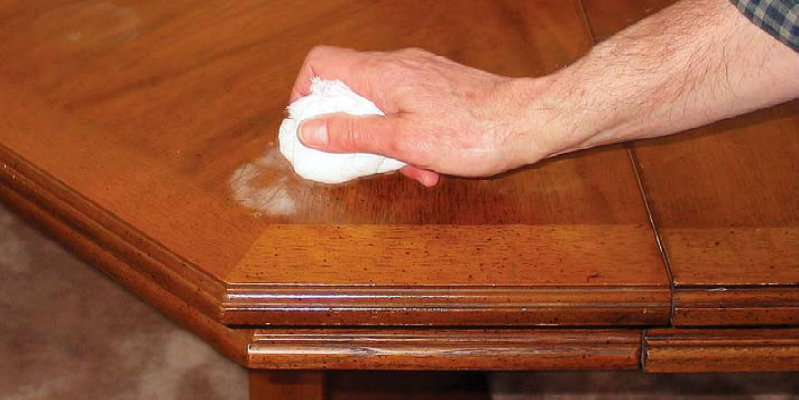
Stains are an inevitable part of life. Whether it’s a splash of coffee on your favorite shirt, a smear of lipstick on the couch, or a stubborn grease mark on your kitchen towel, stains seem to find us at the most inconvenient times. However, knowing how to properly treat and remove these blemishes can not only save your clothes but also extend the life of your favorite items. Stain removal may seem like a daunting task, but with the right techniques and a bit of patience, you can tackle even the most stubborn spots.
In this article, we will explore a range of methods that will help improve your stain removal techniques, ensuring your clothes, upholstery, and fabrics remain spotless for longer.
1. Understand the Type of Stain
The first and most important step in effective stain removal is identifying the type of stain you’re dealing with. Different stains require different treatments, and using the wrong method can sometimes set the stain deeper into the fabric.
-
Protein-based stains: These include food stains such as milk, eggs, blood, and sweat. The key to removing protein stains is to avoid hot water, as it can cause the proteins to coagulate and bond with the fabric, making the stain harder to remove. Instead, use cold water and a mild detergent.
-
Oil-based stains: Grease, butter, and makeup stains are oil-based and require a degreasing agent to break down the oils. Dish soap, baking soda, or even dry cleaning solvent can work wonders for these stains.
-
Tannin stains: These come from substances like coffee, tea, wine, and fruit juices. For tannin stains, an acidic cleaner, such as white vinegar, works well. Avoid using soap, as it can bond with tannins and make the stain permanent.
-
Dye stains: These include things like ink or dye transfer from clothing. A special ink remover or a stain remover with oxygen bleach is often effective for such stains.
2. Act Fast – The Sooner, the Better
Stains are best treated when they are fresh. The longer a stain sits, the more it sets into the fabric, making removal much harder. If you spill something on your clothing or furniture, take immediate action:
-
Blot, Don’t Rub: Blot the stain gently with a clean cloth or paper towel to absorb as much of the spill as possible. Rubbing the stain can push it deeper into the fabric, making it harder to remove.
-
Cold Water First: For many stains, especially protein-based ones, rinsing with cold water immediately can help prevent the stain from setting.
-
Use Stain Remover: Pre-treat the stain with a suitable stain remover. There are many commercial options available, but natural remedies like a paste of baking soda and water or vinegar and dish soap can be surprisingly effective.
3. Use the Right Tools and Products
A crucial element of successful stain removal is using the correct products and tools. While most people reach for the same bottle of detergent for every job, different stains require different approaches. Here’s a rundown of some essential tools and products for stain removal:
-
Stain Remover Sprays: These are formulated to break down stains before washing. Choose one that matches the stain you’re dealing with. For instance, OxiClean is an excellent oxygen bleach that works on a variety of stains.
-
Dish Soap: While it’s meant for dishes, dish soap is surprisingly effective on greasy or oily stains. Just be sure to use it on fabrics that are resistant to oils.
-
White Vinegar: This versatile household item can help dissolve tannins and deodorize fabrics. Mix one part vinegar with two parts water and apply it to the stain.
-
Baking Soda: Perfect for lifting stains, neutralizing odors, and absorbing grease, baking soda can be sprinkled directly onto the stain or mixed with water to form a paste.
-
Rubbing Alcohol: This is particularly useful for removing ink stains. Apply it to the stain with a cloth or cotton ball and blot until the stain lifts.
-
Laundry Detergent: Always use a good quality laundry detergent as your base cleaning agent. It’s especially important for stains that require a full wash, like food or mud.
4. Test First, Then Treat
Before applying any product to a large area of fabric, it’s wise to test it on a small, inconspicuous spot. This test ensures that the fabric won’t be damaged or discolored by the treatment.
For instance, if you’re using vinegar or rubbing alcohol, apply a small amount to an inside seam or hidden part of the fabric and let it sit for a few minutes. If no discoloration or damage occurs, proceed with stain treatment.
5. Specialized Techniques for Tough Stains
Some stains may seem impossible to remove, but with the right technique, they can often be conquered:
-
Grease and Oil Stains: Start by applying a generous amount of dish soap to the stain and gently rub it in. Let it sit for 10-15 minutes, then rinse with warm water. For stubborn stains, sprinkle baking soda over the area, let it absorb the oil, and then vacuum it up.
-
Wine Stains: To remove red wine, immediately blot with a paper towel or cloth to absorb the excess liquid. Next, pour a small amount of white wine or club soda over the stain to dilute it. Then, apply a mixture of equal parts vinegar and water, blot again, and wash the item as usual.
-
Ink Stains: Ink can be a nightmare to remove, but rubbing alcohol or hand sanitizer can often do the trick. Apply the alcohol to the stain, blot with a clean cloth, and repeat the process until the ink lifts. For colored ink, using a commercial ink remover might be necessary.
-
Blood Stains: Blood is a tricky stain, but acting quickly is key. Soak the fabric in cold water as soon as possible, and then apply hydrogen peroxide or an enzymatic cleaner. Gently blot with a cloth, and repeat as needed until the stain is gone.
6. Don’t Forget to Wash
Once the stain has been treated, always launder the item according to its care label. It’s important to check if the stain has been fully removed before drying, as heat from the dryer can set the stain permanently. If the stain remains after washing, avoid putting the fabric in the dryer and repeat the stain treatment process.
7. Prevention is Key
Preventing stains before they happen is always the best strategy. Consider using stain-repellent sprays on clothing and upholstery, especially for high-risk areas like collars, sleeves, and tablecloths. Additionally, handling food and drinks carefully, and keeping stain-removal products on hand, can help you stay ahead of inevitable spills.
Conclusion
Mastering stain removal requires a combination of quick action, the right products, and techniques tailored to each type of stain. While it’s tempting to throw up your hands in frustration when faced with a difficult stain, remember that persistence is key. With the right tools and knowledge, you can restore your clothes and upholstery to their original, stain-free condition. By understanding the nature of stains, treating them promptly, and utilizing the appropriate techniques, you can preserve your favorite items for years to come. So, the next time you spill, don’t panic—act quickly, and let your stain removal skills shine.
You May Also Like
How to Improve Your Home wit ...
03 April 2025
The Beginner’s Guide to De ...
07 January 2025
How to Improve Your Home wit ...
10 December 2024
Popular Post
Expert Insights on Installing Solar Power Systems
28 October 2025Local Plumbing Expertise You Can Trust in Killeen
22 August 2025Innovative Solutions for Refurbishing Commercial Spaces
14 August 2025How to Improve Your Home with Valuation and Agents
30 April 2025Recent Posts
- Expert Insights on Installing Solar Power Systems October 28, 2025
- Local Plumbing Expertise You Can Trust in Killeen August 22, 2025
- Innovative Solutions for Refurbishing Commercial Spaces August 14, 2025
- How to Improve Your Home with Valuation and Agents April 30, 2025
- The Beginner’s Guide to Design in Home Improvement April 24, 2025
- How to Improve Your Home with Maintenance and Repair April 16, 2025
- Why Your Roofing Strategy Needs a Flat Roof April 10, 2025
Archives
- October 2025 (1)
- August 2025 (2)
- April 2025 (10)
- March 2025 (2)
- February 2025 (7)
- January 2025 (8)
- December 2024 (6)
- November 2024 (6)
- October 2024 (6)
- September 2024 (5)
Categories
- Cleaning & Maintenance (5)
- Gardening & Outdoor (5)
- Home Decor (5)
- Home Improvement (5)
- HVAC (5)
- Moving (5)
- Plumbing (6)
- Real Estate & Property (5)
- Roofing (6)
- Smart Home (6)





